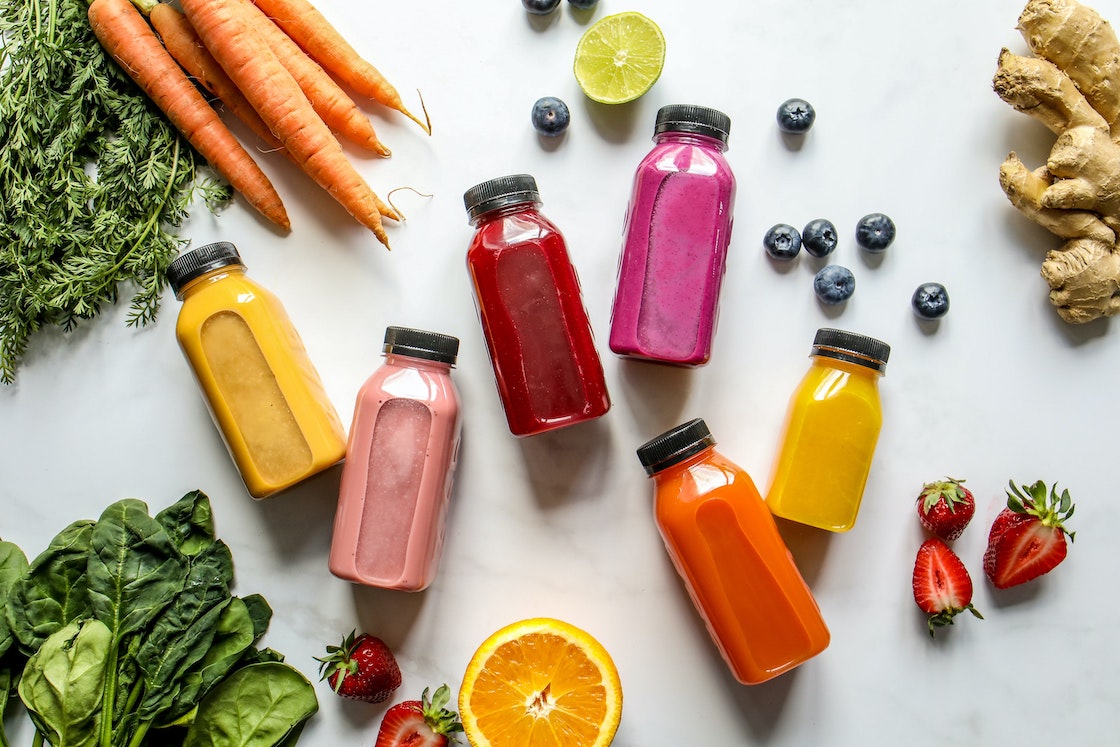Most facelift patients return to a normal diet within 1-3 days of surgery, after being careful to eat or drink nutritious foods such as soup, protein shakes, smoothies, yogurt, fruits, vegetables, and lean meats like turkey and chicken, that are easy to chew during their initial recovery phase.
For ease of eating—and to limit how widely you have to open your mouth—you may wish to stick to a purely liquid diet for the day of and day after your facelift surgery, which some surgeons strongly encourage, aka demand, of their patients. And you’re actually better off doing so.
Should you wish to do so, soups, protein shakes, and smoothies are the best forms of liquid foods to eat after a facelift.
Protein shakes should not be of the prepackaged store-bought kind, and smoothies allow to put many high-protein and high-fiber foods together in an easily consumable and tasty form.
During the period of recovery, patients are also typically advised to avoid foods that are high in salt and sugar, since both of these impact your body’s ability to heal after surgery.
The more natural and nutritious foods you eat, and the less prepackaged and highly processed foods you eat after facial plastic surgery, the better and smoother your recovery should be.
In terms of one’s physical ability to chew food after a facelift, this isn’t greatly impacted since the facelift deals with adjustments to the skin and various subdermal layers of tissue, rather than the jawbone, cheekbone, teeth, or mouth.
What goes into a facelift?
In order to restore a young look, a facelift entails removing extra skin and rearranging the underlying tissues. These results leave the skin and face looking more youthful and wrinkle-free. For more striking and thorough results, a facelift can be combined with a neck lift as well.
Surgeons always make incisions in areas that will allow them to blend in with the hairline and the face’s natural features. That being said, this means that you will have some sutures on the skin to take care of and make sure you’re not irritating them by eating foods that make you chew more aggressively.
Depending on the person, the majority report favorable recovery times after facelift surgery with zero issues with eating normally. It’s normal to expect some swelling and bruising, which should go away in about a week.
If you’re concerned about the healing process, your surgeon will give you instructions on how to care for yourself, and it is crucial that you carefully follow them. The aim is to minimize risks and provide a smooth facelift recovery so you can get your desired results.
Now, you may be wondering to yourself what kind of foods that you’re allowed to eat after a facelift and here are some of the best ones.
What can I eat after having a facelift?
It is advised for patients to take it easy, consume soft meals, and stay away from anything that is too difficult to chew or that is too firm. This is because some meals may be difficult to consume due to edema or bruising.
There are some simple meals that you can prepare following your facelift to ensure that you’re not causing pain to your facelift incisions:
- Soups: After surgery, pureed or cream-based soups are best. Before consuming the soups, make sure they have totally cooled to prevent burning.
- Smoothies: Many of the nutrients your body needs after a facelift may be found in smoothies. To make eating the smoothie easier, avoid adding lumps or seeds.
- Diced Fruit and Vegetables: If you want to consume fruits and vegetables, make sure they are soft and have been sliced into manageable-sized pieces. You can also boil your vegetables if they seem to be too hard for you to chew.
- Eggs: An excellent source of protein, eggs may be prepared in a number of different ways. The best egg dishes are soft-boiled eggs, omelets, and scrambled eggs.
- Yogurt: Yogurt is an excellent soft food to eat after your surgery. Not only is it easy to eat but it also has bacterial effects that can help fight off infections or inflammation.
Meals to avoid after a facelift
After any cosmetic treatment, some foods should be avoided since they are uncomfortable to consume or create further pain. For instance, meals rich in salt may exacerbate edema and should be avoided for about a week after surgery. Dry or rough meats take far more chewing than other meals do. In order to prevent interactions with any pain medications, alcohol should also be avoided.
[See also: The 6 Food Types to Avoid After Plastic Surgery]
A healthy diet helps your recovery
A nutritious diet is crucial for day-to-day life at all times, but it becomes much more so after cosmetic surgery.
Your body heals better and more rapidly when you eat foods high in nutrients and antioxidants, and take vitamins or other supplements as recommended.
Additionally, they provide you the energy you need for a thorough recovery. Throughout your facelift recuperation, don’t forget to keep hydrated by drinking plenty of water.
In addition to being a significant investment financially, getting a facelift is also an investment in your skin. In order to guarantee you obtain the results you’ve been hoping for, you may prolong the benefits of the facelift healing process by consuming a balanced and healthy diet.
Arranging nutritious meals in advance of your surgery—or simply having the ingredients on hand before your surgery—could be considered an important part of preparing for facial plastic surgery.


